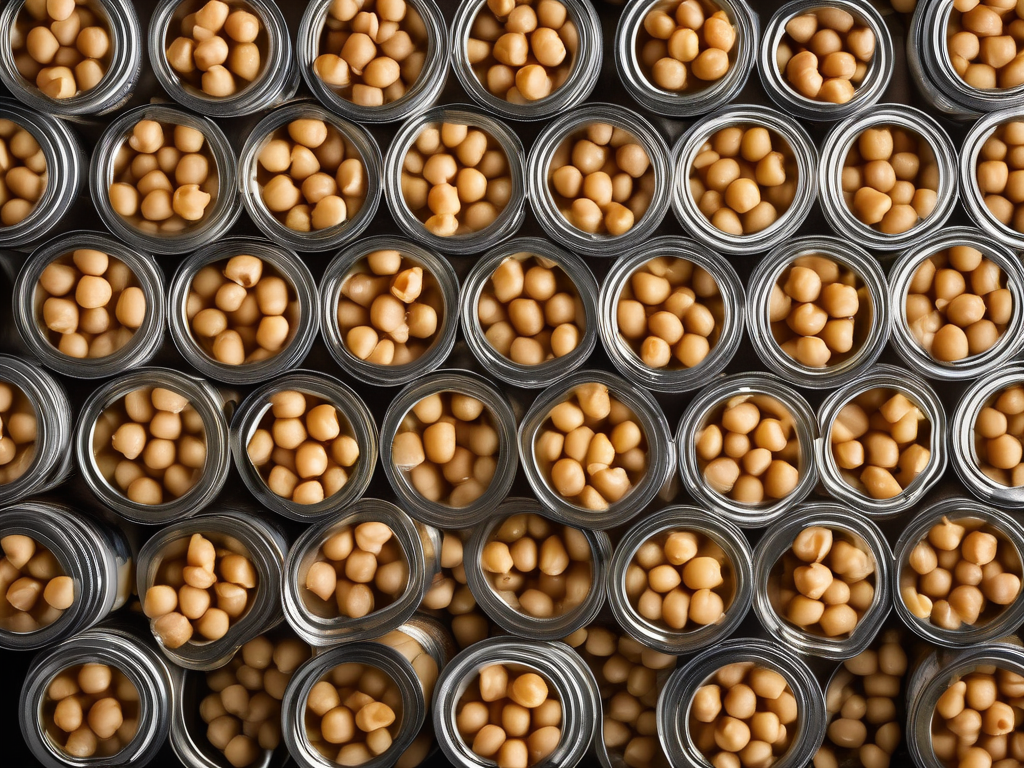
The Ultimate Guide to Extending the Shelf Life of Canned Chickpeas
The Ultimate Guide to Extending the Shelf Life of Canned Chickpeas
Canned chickpeas are a versatile pantry staple that can be used in a variety of dishes, from salads to soups to curries. They are not only convenient but also packed with nutrients like protein, fiber, and vitamins. To get the most out of your canned chickpeas and ensure they stay fresh for as long as possible, it's essential to know how to properly store and handle them. In this guide, we will explore the best practices for extending the shelf life of canned chickpeas. (Canned chickpeas)
Why Canned Chickpeas?
Canned chickpeas, also known as garbanzo beans, are precooked and preserved in a canning liquid to maintain their freshness and flavor. They offer convenience as they are ready to use straight out of the can, saving you time in the kitchen. Canned chickpeas are a great source of plant-based protein, making them an excellent option for vegetarians and vegans.
Nutritional Benefits of Canned Chickpeas:
- High in protein
- Rich in fiber
- Good source of vitamins and minerals
- Low in fat
Proper Storage of Canned Chickpeas
Proper storage is crucial for maintaining the quality and safety of canned chickpeas. Follow these tips to extend their shelf life:
Before Opening:
- Check the Expiration Date: Always check the expiration date on the can before purchasing and consuming.
- Inspect the Can: Ensure that the can is not dented, bulging, or damaged, as this can indicate spoilage.
After Opening:
- Transfer to airtight containers: If you don't use the entire can in one go, transfer the leftovers to an airtight container and store them in the refrigerator.
- Label and Date: Properly label the container with the contents and date to keep track of freshness.
Storage Conditions:
- Cool and Dry Place: Store unopened cans of chickpeas in a cool, dry place away from direct sunlight.
- Refrigeration: Once opened, store leftover chickpeas in the refrigerator at temperatures below 40°F (4°C).
Tips for Prolonging Shelf Life
To make your canned chickpeas last longer, consider these additional tips:
- Rotate Stock: Use the oldest cans first to ensure you are always consuming the oldest stock.
- Freezing: If you have leftover chickpeas and won't be using them in the near future, consider freezing them in an airtight container or freezer bag.
Safety Precautions
Ensuring food safety is paramount when dealing with canned goods. Follow these safety precautions when handling canned chickpeas:
Signs of Spoilage:
- Foul odor
- Mold growth
- Off-color or slimy texture
Consumption Guidelines:
- Do not consume canned chickpeas if the can is damaged or shows signs of spoilage.
- Always rinse canned chickpeas before using to remove excess sodium and preservatives.
Conclusion
By following proper storage practices, utilizing tips for prolonging shelf life, and observing safety precautions, you can enjoy the nutritional benefits of canned chickpeas while ensuring their quality and freshness. Incorporate these guidelines into your routine to make the most out of this versatile ingredient in your kitchen.
Remember, when in doubt, it's always best to err on the side of caution and discard any canned chickpeas that show signs of spoilage. Stay mindful of expiration dates and storage conditions to make the most out of your canned chickpeas. Enjoy cooking with this nutritious and convenient ingredient! (Canned chickpeas)
Authoritative Food Safety References
These agencies and university labs inform every tip and health precaution we publish.
USDA FoodKeeper – Cold Storage Guidelines
Official refrigerator, freezer, and pantry timelines maintained by the U.S. Department of Agriculture.
Visit USDA FoodKeeperFDA Produce Safety Rule & Grower Guidance
Field-to-fridge handling practices that prevent contamination of fruits, vegetables, and leafy greens.
Visit FDA Produce SafetyCDC Foodborne Illness Prevention Hub
Surveillance-backed guidance on pathogens, symptoms, and steps to reduce foodborne illness risk.
Visit CDC Food SafetyUC Davis Postharvest Technology Center
University research detailing optimal storage atmospheres for produce after harvest.
Visit UC Davis PostharvestPenn State Extension – Home Food Preservation & Safety
Peer-reviewed extension bulletins on safe canning, chilling, and reheating practices.
Visit Penn State ExtensionScan your food directly and get instant safety info using our AI-powered camera feature.